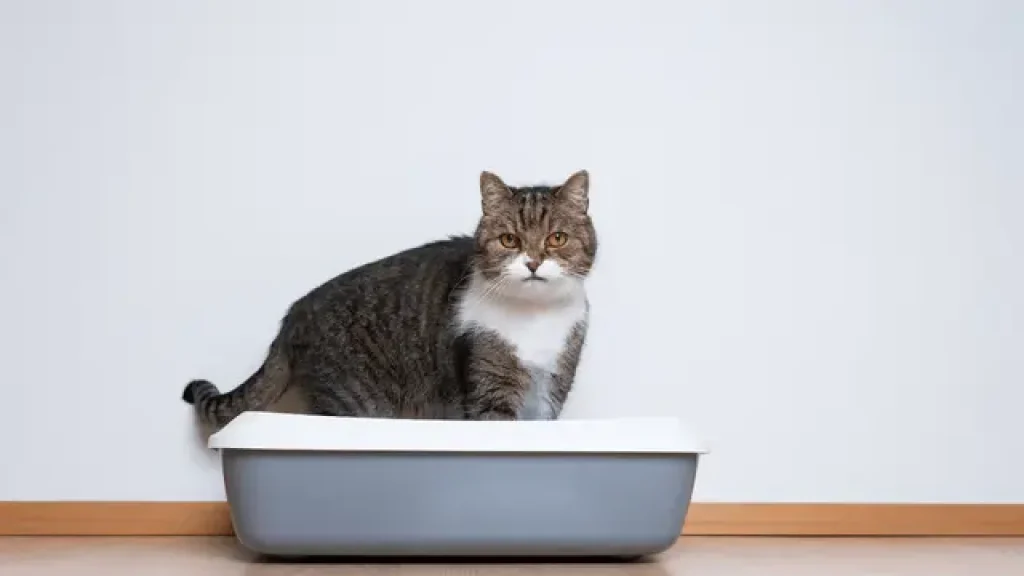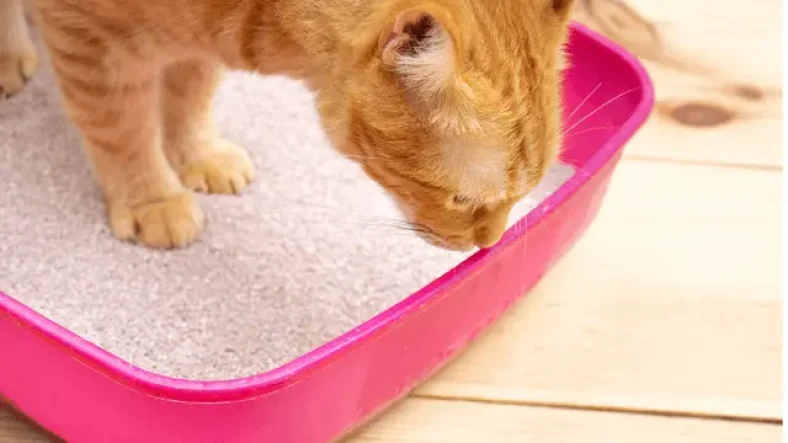Are you a cat owner struggling to find the right number of litter boxes for your feline friend? Many pet owners are uncertain about how many litter boxes they should provide for their cats.
Experts recommend providing at least two litter boxes for one cat, but choosing the right number and type of litter box for your feline friend can be tricky.
Each situation is unique and requires its own considerations.
In this article, we’ll explore the factors involved in making this decision and offer advice on finding the perfect balance for your particular situation.
We’ll explore the factors involved and offer advice on finding the perfect balance between too little and too much for your particular kitty companion.
By taking into account things like the size of house, the age of the cat, and other environmental factors, you can make sure your furry buddy has just what he or she needs – both now and in the future.
With our tips, making decisions about necessary supplies will be easier than ever before!
Contents
Definition Of A Litter Box
A cat litter box is an essential item for any cat owner. It’s a place where cats can do their business in private, and it also helps keep the home clean.
When most people think of a “cat litter box,” they probably imagine a rectangular plastic container with two short walls and no lid.
This classic style is still popular today, but there are now many other options like corner litter boxes, covered models, hooded styles, top-entry designs, self-cleaning units, and even automatic ones.
You can find them in all sizes, from extra small to jumbo large, as well as various colors and materials, including wood fiber or cardboard.
Some come with special features such as carbon filters to help control odors or paw-cleaning ramps that make it easier for cats to dig through the clumping litter.
Choosing the right type of litter box for your situation depends on several factors, which we will discuss next..
Factors To Consider When Choosing A Litter Box
When deciding on the number of litter boxes to get for your cat, there are several factors to consider.
First and foremost is the size of the litter box itself. A too-small litter box can make it difficult for a larger cat or multiple cats to use it comfortably at one time.
Secondly, look for a box that offers good odor control. Some types of litter are better than others when it comes to controlling odors, so be sure to read up on what might work best for you and your pet.
Thirdly, ease of cleaning should also be taken into account when selecting a litter box – after all, no one wants a messy cleanup job!
Lastly, don’t forget about considering the type of litter you want to use in your cat’s new home.
Clumping litter can often require more frequent changes than non-clumping varieties, while some cats may prefer different textures or scents in their litter boxes.
Now that we’ve discussed some important considerations when choosing a litter box for your feline friend let’s take a look at the various types of litter boxes available today.
Types Of Litter Boxes Available

There is a wide variety of choices when it comes to litter boxes for cats. It’s not easy to know which box is best for your pet.
From automatic and self-cleaning boxes to hooded and covered models, let’s take a look at some of the different types of litter boxes on the market today.
The most basic option is an open-top litter box – one without a lid or cover. This type of box has no filter system, so odors from urine and feces can easily escape into your home.
For those with cats who aren’t very picky about their bathroom habits, this may be sufficient enough; however, for households dealing with strong smells coming from the cat’s toileting area, other solutions will better suit their needs.
For cats that prefer more privacy while they do their business, there are several styles of covered boxes available.
Hooded or enclosed litter boxes provide extra security, which many cats find comforting when using the restroom in peace and quiet.
There are also filtered varieties that come equipped with charcoal filters designed to help reduce odor levels significantly compared to standard boxes.
Finally, if you’re looking for something even easier than scooping daily or multiple times per day, consider investing in an automatic or self-cleaning model.
These typically use rakes or other mechanical devices to move around the waste material inside before disposing it into a separate container outside of the main box itself – leaving you only needing to empty it every few days instead!
Ideal Number Of Litter Boxes For One Cat
When it comes to cats and litter boxes, one size definitely does not fit all. The ideal number of litter boxes for a single cat depends on the size of the box itself, as well as your pet’s behavior and preferences.
Generally speaking, experts recommend having at least two different-sized litter boxes per feline in your home.
For starters, larger ones are usually best suited for multi-cat households or bigger cats that like plenty of space when they go about their business.
On the other hand, smaller boxes can be better suited for tiny kittens or adult cats that prefer more compact accommodations.
Additionally, if you only have one cat in your home, then it’s important to give them some extra room so that they don’t become overwhelmed with too much activity in such a small area.
Having multiple litter boxes also ensures that there is always an available spot for your cat whenever they need it.
That way, you can avoid any potential issues related to territoriality or restricted access due to overcrowding.
Plus, having these additional locations helps maintain good hygiene since each box won’t get used up quickly and needs less frequent cleaning than just one large unit would require.
By taking into account your particular cat’s behavior and preferences along with the right-sized litterboxes—you’ll be able to provide them with everything they need while keeping both yourself and your furry friend happy!
Cleaning and maintenance tips should help keep those areas tidy and smelling fresh over time.
Cleaning And Maintenance Tips
When it comes to litter box cleaning, one of the most important things is to ensure that you have enough litter boxes available for your cat.
This will make it easier to clean and maintain them on a regular basis. The rule of thumb is one litter box per cat, plus an extra if you have multiple cats in the house.
Using disposable liners can help keep smells contained when changing out the litter and makes cleanup much easier too.
Additionally, using odor control tips such as baking soda or specific clumping litters can help reduce odors throughout the home.
It’s also essential to stick to a regular cleaning schedule so you never miss scooping out waste from the litter boxes which can lead to more unpleasant odors in the home.
Finally, taking these steps helps create a healthier environment for both you and your pet. Having enough litter boxes around means less mess for everyone involved and allows for better management of any potential issues with cat litter maintenance.
Benefits Of Having Enough Litter Boxes
It is often said that one litter box per cat is enough to keep cats happy and healthy. However, this theory may not be entirely accurate. In fact, having multiple litter boxes can provide various advantages for both cats and their owners.
Having more than one litter box can help reduce odor in the home. Having several different litter boxes spread throughout the house gives a cat easy access to a clean place to go when they need it, meaning less time spent dealing with smelly messes.
This also makes cleaning up after your pet much easier, as you don’t have to worry about constantly changing out dirty litter or soiled areas of the same box.
Another benefit of having multiple litter boxes is that it helps reduce stress on both cats and their owners.
Cats are naturally territorial animals and will feel more secure if they have multiple places to do their business away from any potential intruders or other pets in the household.
This can also give them an area where they can escape for some alone time without feeling threatened by anything else in the home.
Additionally, having extra litter boxes means less work for the owner since there’s no need to frequently change out used litter or empty a single large box every day.
Overall, providing your cat with multiple litter boxes offers benefits beyond just reducing odors – like helping reduce stress on both cats and humans alike while making cleanup simpler at the same time!
FAQs
Q: How often should I clean my cat’s litter box?
A: It’s recommended that you clean your cat’s litter box at least once a day to keep it clean and odor-free. Some cats may require more frequent cleaning depending on their habits and the type of litter you use.
Q: Can I use any type of litter in my cat’s litter box?
A: You should use litter specifically designed for cats. There are different types of litter available, including non-clumping, clumping, and crystal varieties.
Each type has its own pros and cons, so it’s important to choose the one that works best for you and your cat.
Q: Can I use scented litter in my cat’s litter box?
A: It’s generally not recommended to use scented litter as some cats may be sensitive to the smell. Additionally, some scented litter can be harmful if ingested. It’s best to stick to unscented litter or those with a natural odor control mechanism like baking soda.
Q: How many litter boxes should I have for multiple cats?
A: You should have one litter box for every cat, plus one more. There won’t be any territorial disputes or congestion to worry about now. If you have two cats, then you’ll need at least three litter boxes.
Q: How can I train my cat to use its litter box?
A: Most cats instinctively know how to use a litter box, but if your cat is new to your home, you can help them adjust by placing them in the litter box and letting them sniff around.
Encourage them to use the box by gently placing their paws in the litter. Reward them with treats and praise when they use the box correctly.
Conclusion
Having a litter box for your cat is an important step in taking care of them. It’s essential to remember that cats are creatures of habit and need consistency when it comes to their litter boxes.
When you provide the right number, type, and maintenance level of litter boxes, you can ensure your cat will be happy and healthy.
It’s recommended that one cat should have at least two litter boxes—one on each floor if possible—in order to reduce any anxiety they may feel about using the same space frequently.
Additionally, use non-clumping or clumping litter, depending on your preference, as long as it has low dust content and suits your budget.
Cleaning the litter box once per week helps keep odors away, which reduces stress levels for both humans and cats alike – “A clean home is a happy home!”
Finally, make sure to practice patience with training your pet how to properly utilize their new bathroom area – just like us, humans, our furry friends take some time adjusting to changes too!
All in all, having enough litter boxes for one cat requires effort, but with proper planning and understanding of what works best for you and your pet, there’s no doubt this process will be smooth sailing.


